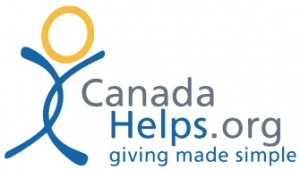By Marina Glogovac and Alex Gillis.
Update to this story: In April, 2021, CanadaHelps released “The Giving Report 2021.”
In the spring of 2020, when the COVID-19 pandemic was announced, Kitikmeot Heritage Society (KHS) was forced to cancel in-person programs and fundraising events. However, it expanded online-fundraising efforts and saw a sudden increase in donations.
 Based in Cambridge Bay, Nunavut, KHS (known as Pitquhirnikkut Ilihautiniq) works with elders to revive the near-extinct language of the Inuinnait, a distinct group of Inuit living in the Arctic. Surprisingly, even as KHS cancelled or adapted cultural, archeological and language programs, the organization’s online donations jumped.
Based in Cambridge Bay, Nunavut, KHS (known as Pitquhirnikkut Ilihautiniq) works with elders to revive the near-extinct language of the Inuinnait, a distinct group of Inuit living in the Arctic. Surprisingly, even as KHS cancelled or adapted cultural, archeological and language programs, the organization’s online donations jumped.
“One reason was the pandemic, which highlighted the need to support charities, but another reason was the social-justice movement, which highlighted the need to support Black and Indigenous charities,” says Lyndsey Friesen, KHS’s Philanthropy and Communications Manager. For example, on National Peoples Indigenous Day (June 21), KHS saw a rise in donations. “The rise is significant for a small charity in the North, especially because the average is $25 to $50 a donation,” Friesen explains.
 Many of these donations came through online giving portals run by CanadaHelps, a technology charity that connects donors with all charities registered in Canada. Nearly one million people gave through CanadaHelps in the two years up to November 2020, a good sample size of what’s happening online in the rest of Canada.
Many of these donations came through online giving portals run by CanadaHelps, a technology charity that connects donors with all charities registered in Canada. Nearly one million people gave through CanadaHelps in the two years up to November 2020, a good sample size of what’s happening online in the rest of Canada.
And what’s happening? The 2020 trends show that donations to charities working in the Indigenous Peoples charitable category increased at a faster rate, fuelled by donations from young, urban, educated and culturally diverse households that tend to have less money, compared to other demographic groups.
“CanadaHelps data from 2020 shows that, in spite of an overall 10-year decline in average donations in Canada, online giving continued accelerating in almost every charitable category.” –Marina Glogovac, President and CEO of CanadaHelps.
 Overall, Canadians donated more since the pandemic announcement in March and since protests in the spring against racial and social injustice. Last year CanadaHelps’ The Giving Report 2020 revealed that online giving had risen in 2017-2019 for almost every type of charity. This continued in 2020, especially for charities working in the social services, public benefit and health sectors. (CanadaHelps annual Giving Reports provide insights for small and mid-sized charities and don’t include data from large charities and large donations.)
Overall, Canadians donated more since the pandemic announcement in March and since protests in the spring against racial and social injustice. Last year CanadaHelps’ The Giving Report 2020 revealed that online giving had risen in 2017-2019 for almost every type of charity. This continued in 2020, especially for charities working in the social services, public benefit and health sectors. (CanadaHelps annual Giving Reports provide insights for small and mid-sized charities and don’t include data from large charities and large donations.)
While fewer Canadians have been donating each year and the average amounts of their gifts have been decreasing for years, online giving has been growing at nearly three times the rate of overall giving.
 Indigenous Peoples was number one out of ten charitable categories in terms of fastest growth. Only 1% of online donors give to charities working with Indigenous communities, compared to 55% of donors giving to charities in social services and 39% giving to health charities, but the jump in giving in Indigenous Peoples likely reflects an increasing awareness among Canadians – an awareness heightened by COVID-19 and by movements against social and racial injustice.
Indigenous Peoples was number one out of ten charitable categories in terms of fastest growth. Only 1% of online donors give to charities working with Indigenous communities, compared to 55% of donors giving to charities in social services and 39% giving to health charities, but the jump in giving in Indigenous Peoples likely reflects an increasing awareness among Canadians – an awareness heightened by COVID-19 and by movements against social and racial injustice.
Perhaps Canadians are finally seeing the magnitude of inequalities and systemic racism directed at Indigenous peoples – and are donating more as a result.
Update to this story: In April, 2021, CanadaHelps released “The Giving Report 2021.”
Marina Glogovac is President and CEO of CanadaHelps. Alex Gillis is the Editorial Manager of PANL Perspectives and researcher and writer of CanadaHelps’ “The Giving Report.” Glogovac is on Twitter and LinkedIn. Gillis is also on LinkedIn.
Friday, January 8, 2021 in Fundraising
Share: Twitter, Facebook



